Where gas is unavailable, it will save you! Heating your home with electricity: the most economical way
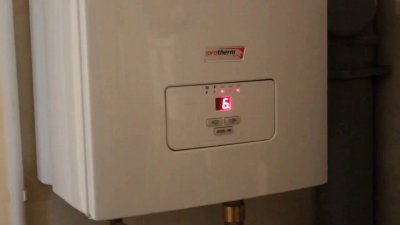
Bringing electricity to the house - the task is realistic and less expensive than gasification. That is why many people think about heating with electrical devices.
This type of heating is convenient: does not require fuel loading and filling, changing gas cylinders. And can be automated if desired.
Content
Features of heating a house with electricity: which method is the most economical
There are many ways to heat your home using electricity.
Electric boilers
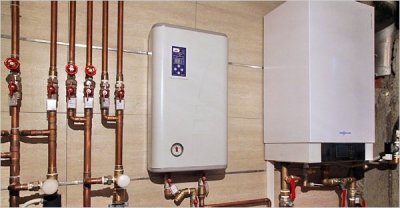
Transfer of energy to the coolant heating electrodesHot water flows into pipes and radiators distributed throughout the rooms, and thus the building is heated.
The efficiency of electric boilers is high, some models reaches 99%. Heating of the coolant begins immediately, how the boiler is turned on.
Advantages of this type of heating:
- affordable prices;
- low cost of installation;
- there is no need for a separate firebox;
- simple and reliable device;
- no open flame;
- environmentally friendly: no emissions, no air duct required;
- minimal maintenance;
- remote control and automation are possible;
- overheating protection and emergency shutdown.
Disadvantages of heating:
- heating costs due to the cost of electricity;
- risk of power outages;
- high power requirements;
- Hard water forms scale on the heating elements.
Important! Electric heating is considered the most expensive (1 kW is 7.5 times higher than when heating with main gas). In addition, the capacity allocated to private households is insufficient for heating with electricity.
Scheme
The electric boiler is the central element. The heating system usually includes:
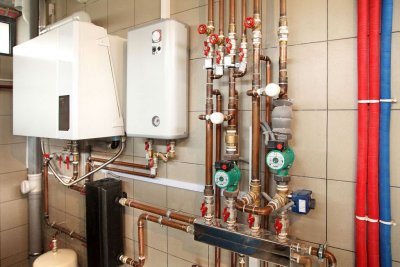
- pump;
- expansion tank;
- collector;
- a number of taps (drain, balancing) and valves (distribution, air);
- filter;
- pipes;
- radiators (batteries).
Installation
In the beginning study the instructions to the equipment.
Installation of the heating system is carried out in the following sequence:
- installation boiler;
- installation expansion tank;
- installation collector;
- organizations security groups;
- inclusion in the scheme pump;
- installation devices to improve the system (control devices, valves, taps);
- wiring pipes;
- installation radiators.
General principles of saving when using electric boilers
The liquid coolant does not cool down quickly. And also:
- Select economical model electric boiler.
- Switch to a dual-tariff electricity meter and use the heating boiler mainly during the day with a low cost per 1 kW.
- Integrate a heat accumulator into the system, which accumulates heat at night and releases it during the day when the price of electricity is higher.
- Qualitatively Insulate the house.
Electric heating element boiler
Common types of electric boilers for heating:
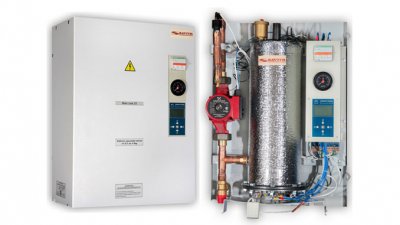
- Heating elements;
- electrode;
- induction.
The heating element boiler has heating elements inside — heating elements in the form of curved metal tubes.
They heat up themselves and transfer energy to the coolant. If the heating elements are not immersed in liquid, they can burn out.
Advantages of heating:
- heat the house with only electricity;
- There are models on the market that can be used with the electrical power capacity allocated in Russia.
Disadvantages of heating:
- the most expensive heating option;
- requires maximum power;
- efficiency decreases over time.
How are savings achieved?
It is cheaper to use low-power heating element boilers for heating, if possible.
The remaining options are similar to the general recommendations described above. for liquid electric heating systems.
Induction boilers. How much does the equipment cost?
The liquid coolant is heated by a magnetic field, which is produced inside such a boiler. The two main components of the device: a coil and a core containing water.
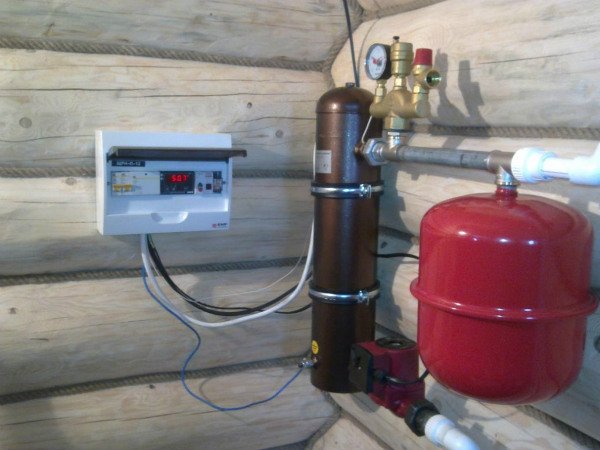
Photo 1. Induction electric heating boiler. It is a small cylinder, takes up little space.
The energized coil creates a magnetic field that heats the core, which transfers energy to the coolant flowing through it. Since the coil does not come into contact with the water, the coolant is not under voltage.
Advantages of heating with an induction boiler:
- Reliability: they work for years without repair.
- They are considered to be the most economical among electric boilers.
- Small dimensions.
- There are no special requirements for the coolant.
- Low inertia. Energy costs are spent on the initial heating of water in the system, and maintenance is already without large expenses.
- Easy installation.
- Possibility of electronic control.
Disadvantages of heating with an induction boiler:
- Difficulties of self-repair.
- Noise.
- The main disadvantage of induction boilers is the cost. If the prices for heating element electric boilers start from 3-4 thousand rubles, then this option will cost already more than 30 thousand rubles Although some sources claim that the difference between these types is from 2 times.
Savings when using induction boilers
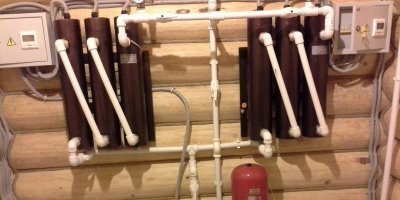
This is achieved through the principle of operation. More economical than heating elements and are considered to be cost-effective to operate, especially if they have high-quality automation.
For heating with an electric boiler, economical models are selected and use the listed cost reduction opportunities: high-quality insulation, the presence of a heat accumulator, a two-tariff meter and heating of the coolant during the cheapest period of the day. This will allow you to save on heating with electricity.
How to cheaply heat a private house with other electrical appliances
In addition to the above methods, there are more innovative options for heating homes using electricity.
Infrared equipment - heats the room economically
Manufacturers of similar equipment effective and safe for all living things, they are called electromagnetic oscillations that follow the visible red part of the middle spectrum (infrared rays). Wavelength from 6 to 20 microns, according to various sources. This is the interval used in infrared heating devices.
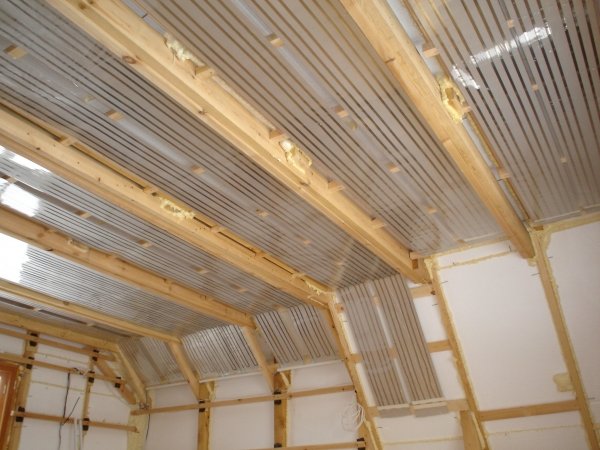
Photo 2. Installation of infrared heating: special films are attached to the ceiling, which emit heat.
The device does not heat the air in the room, but only objects that are aimed at. And they already transfer heat to the surrounding air.
Options for similar heating equipment:
- infrared film;
- wall panels;
- hanging heaters;
- floor heaters.
It is used for placement on the ceiling, walls or in heated floors. It is possible to cover the IR film with decorative finishing, or to use wall panels independently as an interior element, thanks to a variety of design options.
Installation of IR heaters
The first category of such equipment used without additional installation or with minimal requirements for it. This:
- floor heaters, which simply plug into a power outlet;
- panels, which are hung on the wall like paintings;
- ceiling fixtures, similar to daylight lamps.
Film options require more complex installation. The film sheet is cut to size.
Mounted on the ceiling under decorative finishing or suspended ceilings.
On the floor it is laid on a prepared base layer, and tiles, laminate, parquet, carpet or linoleum are used on top.
Features of IR heating
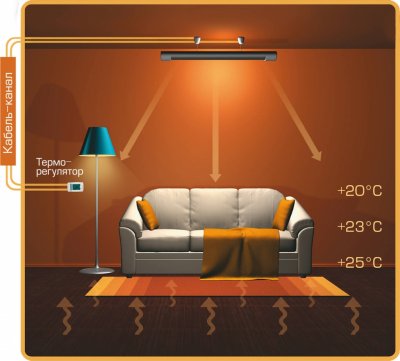
- Heating occurs only near an infrared device or film.
- There is virtually no energy consumption for heating the air. Therefore, they are also used outdoors (for example, to warm guests on open restaurant verandas, in greenhouses).
- IR heating can be either additional (spot) or main in brick and other types of houses. The number of necessary devices or the area of the film depends on this.
- This type of heating is considered economically beneficial.
- As with other types of heating there is no noticeable difference between the air temperature at the floor and at the ceiling.
Pros:
- Few other heating devices are used outdoors.
- Fast heating.
- Does not dry out the air.
- Silence.
- Resistance to voltage surges.
- Cost-effectiveness.
Cons:
- The presence of constant electromagnetic radiation when the devices are turned on.
- Objects nearby become very hot.
- Film parts are mounted under the trim, which makes them difficult to replace in case of breakage.
How do savings occur?
This type of heating is economical due to the fact that it is directional. No energy is spent on heating the air, and people and objects are heated directly.
Users note low energy consumption for IR heating of premises.
Electric fireplaces for heating a summer house
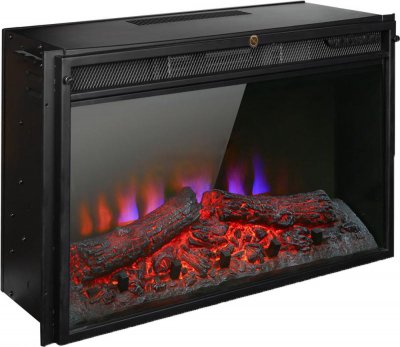
Some electric fireplaces operate on the principle of infrared radiation. That is, their impact is directed.
To heat a summer house, an electric fireplace is installed in the room where people spend most of their time. Other rooms will not be heated by such a fireplace.
Advantages of electric fireplaces:
- Fast heating.
- Low prices.
- No chimneys.
- Imitation of real flame, creating coziness.
- Possibility of installation in an apartment.
Cons:
- Only one room is heated, and the most efficient is a small one.
- A separate power outlet may be required due to the significant power draw.
What are the savings?
- Economy is achieved thanks to the principle of infrared heating (energy is not wasted on heating the air).
- Heating only one room where people are located.
There are also other types of electric fireplaces available for sale, so You can choose a model with the characteristics you are interested in.
Convector devices
Electric convectors are one of the most popular heaters. There is a heating element inside such a device. The body has holes for air circulation. The flow passes through the convector, heating up, and then enters the room, heating it.
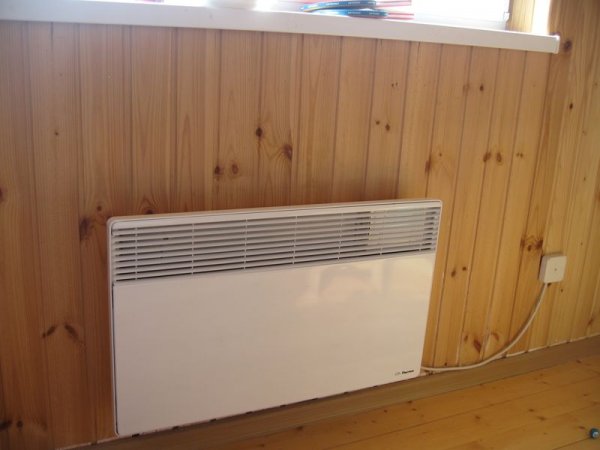
Photo 3. Wall-mounted electric convector. The device is plugged into a socket and looks like a regular battery.
Pros:
- Fast heating.
- Possibility to heat a large room (up to 30 sq.m).
- Some models use electronic thermostats to effectively control the temperature.
- The heating elements have a relatively low temperature, making the devices safe.
Cons:
- Significant power consumption.
- A noticeable difference between the air temperature at the floor and at the ceiling.
- Movement of dust in the room.
What are the savings?
In general, this type of heating cannot be called economical. But if the country house is used only a couple of days during the winter, then this option will save significant funds on organizing a full-fledged heating system. Due to the absence of liquid, a house with convectors can be safely left at sub-zero temperatures.
Oil appliances
Such heaters are - sealed devices with a metal body in several sections. Mineral oil is used inside. With the help of a tubular electric heater, the oil is heated and warms up the body, and from it the air in the room. This type of heating devices is widely used.
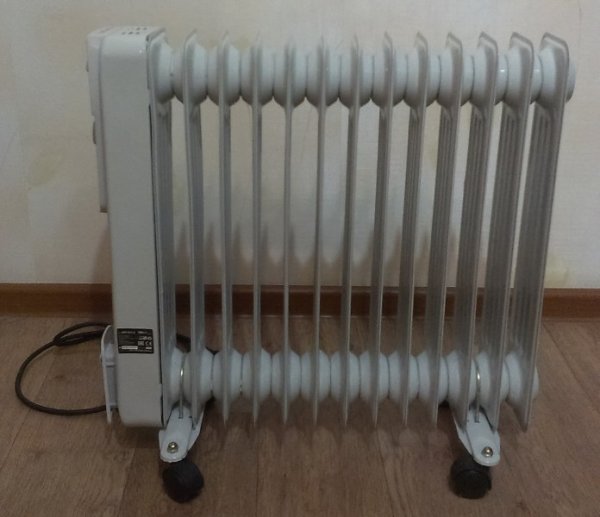
Photo 4. Oil heater. The device is on wheels, it can be moved to different parts of the house.
Pros:
- Affordable price.
- Mobility.
- Safety.
- Ease of operation.
Cons:
- Takes a long time to heat up.
- As the main heating they are expensive.
How are savings achieved?
This heating option will be economical for rare visits to the country house and as a supplement to the main heating.
And it will be critically important for savings high-quality insulation of the premises.
Fan heaters
A fan heater is a small device that starts heating the room immediately after being turned on.. The constituent parts are: housing, fan and heating element. Additionally sometimes a thermostat and humidifier are built in and other devices.
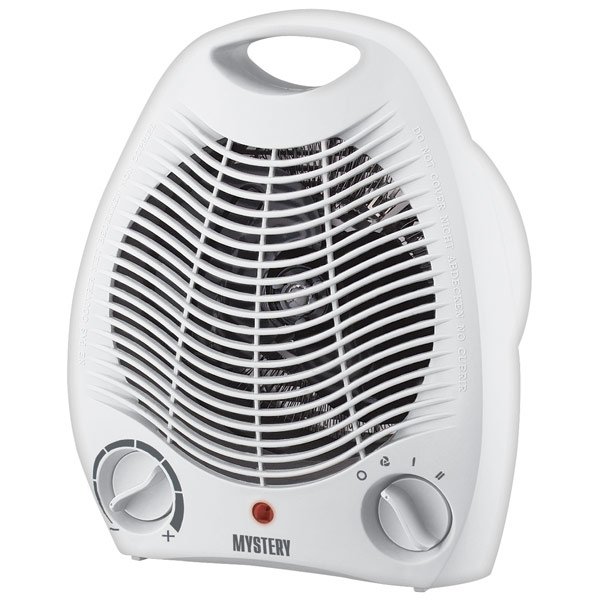
Photo 5. Fan heater from the manufacturer Mystery. The device allows you to regulate the temperature and air pressure.
Pros:
- Compactness.
- Fast effect.
- Affordable price.
Cons:
- Most household fan heaters are not suitable for full heating, but only for supplementing it.
- Some models make noise.
Attention! Spiral fan heaters are fire hazardous and dry the air.
What are the savings?
When you need to quickly heat a small room, it is profitable to use such an efficient and inexpensive device.
Electrical panels
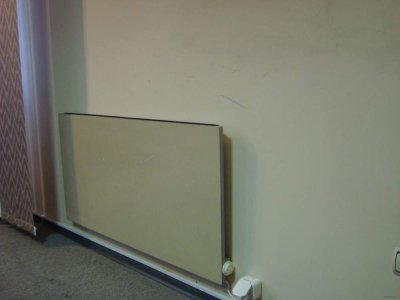
Ceramic panels are one of the relatively new possibilities for electric heating. The principle of their operation combines the advantages of infrared and convection heating methods.
This allows for quick heating, but the ceramic component will retain heat longer, creating special comfort.
The panel consists of a ceramic front part, behind which is a metal body. Between them is a heating cable.
Pros:
- Safety.
- Automability.
- Long service life.
- Can be installed in the bathroom.
- Cost-effectiveness.
Cons:
- To heat an entire house, you will need a significant amount of money to purchase panels.
- Electricity costs will still be noticeable.
What are the savings?
- Installation thermostats.
- Usage multi-tariff meter with main heating at night.
Electric rugs
Such electrical appliances consist of a film heater (which allows them to heat up evenly over the entire area), and also rubber coating and carpeting on both sides of the heating element. The design also includes reflective material. Such mats are often powered from a 12 volt outlet.

Photo 6. Electric rug for heating the room. It looks like a regular rug, but has a wire for connecting to the power grid.
Electric rugs can be either small (for warming the feet), and the size of a full-size carpet (to heat the whole room).
Pros:
- In a large version, this is an analogue of a warm floor, which does not require complex installation.
- Mobility, can be easily used in any room.
Cons:
- Limited volume of heated surface.
- Constant electromagnetic radiation near a person.
What are the savings?
- One rug can be used in different rooms as needed.
- Only the required area is heated.
Reference. For heating a country house, which is used from spring to autumn, it is better to use separate electric devices without connecting a circuit with a liquid coolant. For hot water supply, a separate boiler.
Inverter boiler
Finally, another option using pipes and heat carrier.

The operating principle is based on the phenomenon of electromagnetic induction.. The device converts direct current into alternating current, and the resulting magnetic field produces an induction current. This happens using inverter 160.
Such a boiler has two key parts: heat exchanger and magnetic circuit, which creates an alternating magnetic field. The heat exchanger is included to transfer energy to the coolant.
Pros:
- No heating elements.
- Low requirements for water quality.
- Fast heating.
Cons:
- High cost.
- Narrow choice.
- Complex control system.
Useful video
Watch the video, which tells about an example of heating a private house with electricity.
Electric heating: wide choice and cost optimization opportunities
Among the many electric heating devices available on the market There is a whole range of solutions for any purpose. Thanks to inexpensive equipment, every homeowner can try out several options, compare their costs and choose the most profitable one.











